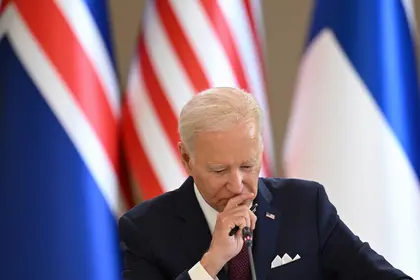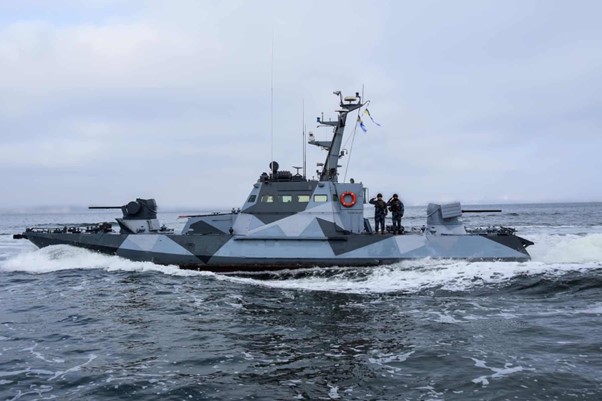In an interview with CNN’s Fareed Zakaria prior to the NATO Summit in Vilnius, Lithuania, last week, President Joe Biden said he did not “think there is unanimity in NATO about whether or not to bring Ukraine into the NATO family now, and that the process could take place only after a peace agreement with Russia was in place.”
JOIN US ON TELEGRAM
Follow our coverage of the war on the @Kyivpost_official.
There it is again – “a peace agreement with Russia.” Not a win, but a negotiated settlement. It begs the question – what is the end state in Ukraine for the Biden Administration?
- Read the most contemporary war in ukraine update in the Kyiv Post’s daily news pieces for today.
- Get the newest Ukraine news reports as of today.
One thing is for sure, it is not consistent with Ukraine President Volodymyr Zelensky’s end state – “Russian forces completely withdraw[n] from the occupied Donbas region and the Crimean Peninsula,” or that of his commanding general Valery Zaluzhnyy, who adamantly stated his intent to reclaim Crimea recently in a Washington Post article, “As soon as I have the means, I’ll do something. I don’t give a damn — nobody will stop me.”
Unlike the Biden administration, the general is not concerned about a Russian response to taking the battle to the opposite side of the border, stating: “To save my people, why do I have to ask someone for permission what to do on enemy territory?

Zelensky Says Ukraine Military Aid Not Part of US 90-Day Aid Suspension
“For some reason, I have to think that I’m not allowed to do anything there. Why? Because [Russian President Vladimir] Putin will … use nuclear weapons? The kids who are dying don’t care.”
Someone in the White House, Pentagon or Foggy Bottom should be taking notes – with or without them, Ukraine is going to take the fight to Russia.
To the Biden administration’s credit, they have led the effort to supply Ukraine with humanitarian aid, weapons, ammunition, training, and intelligence to defend themselves – over $75 billion. And the President has reassured Zelensky on numerous occasions that the United States stands “shoulder to shoulder” with them.
Biden doubled down on that message at the conclusion of the NATO Summit stating: “We will not waver … our commitment to Ukraine will not weaken. We will stand for liberty and freedom today, tomorrow, and for as long as it takes.
“We all want this war to end on just terms.”
But “just terms” does not necessarily mean win. Winning – defeating the Russian invasion and evicting them out of Ukraine, to include Crimea, arguably, has never been the end state for the Biden Administration.
And therein lies the rub.
Washington’s stated objective at the onset of the “special military operation” was made clear when Secretary of Defense Llyod Austin said: “We want to see Russia weakened to the degree that it can’t do the kinds of things that it has done in invading Ukraine.”
That statement was validated later by a spokesperson from the National Security Council who said: “U.S. goals were to make this invasion a strategic failure for Russia.
“One of our goals has been to limit Russia’s ability to do something like this again, as Secretary Austin said. That’s why we are arming the Ukrainians with weapons and equipment to defend themselves from Russian attacks.”
Biden’s preferred outcome has always been a negotiated settlement – a political solution. This was validated in November 2022, when Chairman of the Joint Chiefs of Staff General Mark Milley said: “There may be a political solution where politically the Russians withdraw. You want to negotiate at a time when you’re at your strength, and your opponent is at weakness.
“And it’s possible, maybe, that there’ll be a political solution. All I’m saying is there’s a possibility for it.”
He later added, “When there’s an opportunity to negotiate, when peace can be achieved, seize it.”
The White House strategy has always been to weaken Russia. Winning the war could lead to a “regime change” in Moscow, and the White House seemingly wants nothing to do with that.
That explains the trickle-down strategy of providing weapons to Ukraine and their “just in time” delivery to the battlefield. Just enough to fend off the invader, but not enough to push them out of the country or interdict the next wave of replacements.
Targets beyond the Ukrainian border are off limits as John Kirby clearly articulated on June 5th when he told reporters: “We don’t encourage, we don’t enable and we don’t support strikes or attacks inside Russia.”
The dual-purpose improved conventional munition (DPICMS) recently released by the Department of Defense is a welcome addition to the Ukrainian arsenal, but it keeps the battle in the trenches – in Ukraine.
The close fight is significant and must be won to break through the defensive belts, but it will not win the war – interdiction will, and that means cross border strikes.
The United Kingdom and France get it. Storm Shadow and SCALP missiles provide Ukraine with the precision deep strike capability necessary to set conditions to win.
It is not a matter of individual weapon systems or munitions; rather, the collective combined arms approach to warfare. For now, close air support and precision deep strike capabilities are in demand.
U.S. strategy has been about getting Russia and Ukraine to the negotiation table, and attrition has been the tool. But neither Putin nor Zelensky will take the bait; therefore, the war drags on and becomes one of the forever wars Biden promised the American public he would never draw the U.S. into again.
The Javelin missile, Switchblade drones, HIMARS and the Patriot Missile System are all exceptional weapon systems and have enabled Ukraine. HIMARS levelled the battlefield and shifted momentum to Ukraine; however, the U.S. secretly modified the weapons system so it “could not be used to fire long-range missiles into Russia … a precaution the Biden administration says is necessary to reduce the risk of a wider war with Moscow.”
They have been just enough to survive and fight back against the Russian invasion, but not enough to pursue and defeat the enemy. Enough to weaken them in a war of attrition but given sanctuary on the Russian side of the border, the Kremlin is able to continue to wage their war on unarmed Ukrainian civilians and replenish their losses in the trenches at will.
Seventeen months into a war with Russia, and the Biden Administration still has not made a decision on providing ATACMS or F-16s to Ukraine.
For all the talk the President puts into ‘being on the right side of history,’ his indecisiveness is in fact a decision that prolongs the war of attrition in Ukraine. When does weakening Russia transition into winning the war?
Former Defense Secretary Robert Gates' observation about then-Vice President Joe Biden still rings true: "I think he has been wrong on nearly every major foreign policy and national security issue over the past four decades.”
Only now, those decisions are measured in lives lost – and unless Biden reverses course and goes for the win in Ukraine, he risks proving Gates right in terms of the single biggest decision of his presidency to date.
With the assistance of the U.S. and NATO, Ukraine has put forth a herculean effort to be in a position to win this war and secure Europe’s eastern flank. They deserve the right to win, to live in peace, and become a member of the NATO Alliance.
Copyright 2023. Jonathan E. Sweet and Mark C. Toth. All rights reserved.
The views expressed in this opinion article are the author’s and not necessarily those of Kyiv Post.
Col. (Ret.) Jonathan Sweet (@JESweet2022) served 30 years as a military intelligence officer. His background includes tours of duty with the 101st Airborne Division and the Intelligence and Security Command. He led the U.S. European Command Intelligence Engagement Division from 2012-14.
Mark Toth (@MCTothSTL) writes on national security and foreign policy. Previously an economist and entrepreneur, he has worked in banking, insurance, publishing and global commerce. A former board member of the World Trade Center, St. Louis, he has lived in U.S. diplomatic and military communities around the world.
You can also highlight the text and press Ctrl + Enter










